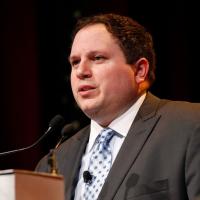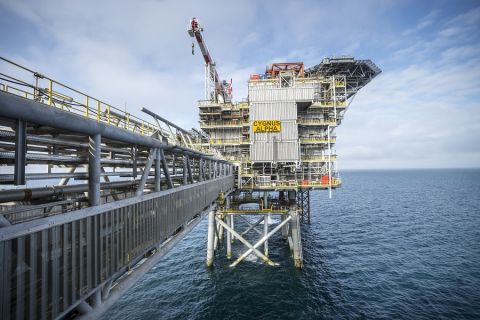
Source: Shutterstock
The midstream has continually evolved over the past 20 years and the trend continued in 2018. Indeed, a consistent theme from several major midstream companies’ fourth-quarter 2018 earning calls were dealing with the changing midstream landscape.
These included Enterprise Products Partners LP (NYSE: EPD) openly discussing the possibility of becoming the latest MLP to transition to a C-corp, while Targa Resources (NYSE: TRGP) continued to move away from a traditional MLP asset base as it further honed its integrated system approach, and Shell Midstream Partners (NYSE: SHLX) altering its shipping policy on one of its most utilized systems.
It’s not terribly unusual for underutilized pipeline systems to fail to secure long-term contracts, but it’s pretty rare that a pipeline system consistently setting utilization records would fail to do so while also losing long-term contracts.
However, that happened with Shell Midstream’s Zydeco Pipeline system this past year. This system, which transports volumes from the Eagle Ford, Permian and Bakken into Houston, transported 704,000 barrels per day (bbl/d) in the fourth quarter. At the end of the quarter, two of its four contracts expired and a third is set to expire in second-quarter 2019.
Last fall, Shell Midstream officials said they weren’t getting the level of interest for their proposed terms and conditions, but still expected the growing production out of the Permian to support new contracts or possible expansion of the system.
Thus far no new deals have been reached with shippers, but Shell is continuing to discuss long-term contracts. In the meantime, volumes are being moved on the Zydeco line on a spot basis. “During this time, our volumes will be less predictable vs. the take-or-pay contract structure we have previously had in place,” Kevin Nichols, Shell Midstream’s CEO, said during the company's recent fourth-quarter earnings call.
While Shell anticipates taking a $15 million hit in net income in the second quarter due to the loss of these long-term contracts, the good news is that pipeline demand out of the Permian remains strong and the system is expected to continue to move a large amount of production. Whether that movement will eventually be backed by long-term contracts is another question.
Another C-Corp Move?
Transforming market dynamics are also resulting in Enterprise considering various changes. The management team has been moving the company away from the classic MLP financial structure toward one with more self-funding. In accordance with this move, the company announced a $2 billion multi-year common unit buyback program that is also expected to help return more capital to investors.
“I think the transition that we’re making is from the MLP-centric model that had our own specialized financial metrics,” Randy Fowler, president and CFO of Enterprise, said during the conference call. He noted the need to speak a different language to attract more traditional investors such as institutional investors.
He acknowledged part of this transition may involve a conversion from an MLP to a C-corp.
“We continue to evaluate it,” Fowler said. “It’s a long-term decision because there’s no going back. We’re looking at a number of things as far as relative valuation and relative access to capital. Frankly, one of the [questions is], how many more MLPs are there going to be to convert? When we look at Congressional Budget Office forecasts, one of the questions we ask is, ‘How permanent is this 21% corporate tax rate?’ The CBO has the federal deficit doubling to almost $1.3 trillion by 2022. There’s another election coming up in 2020. So again, how permanent is the 21% rate? Remember, Brett Kavanaugh got more Democratic votes [for the Supreme Court] than that 21% corporate rate did. So again, we’ll continue to monitor.”
Integrating Assets
Enterprise was one of the first midstream companies to begin to expand its asset base into other areas of the oil and gas industry that were not traditionally part of the midstream. These include downstream and export assets and this has become a trend throughout the industry.
Targa Resources is also helping to change the meaning of what a midstream company is with its widespread integrated approach that features an asset base active in the gathering and processing, fractionation, export and downstream sectors.
The largest common denominator for these assets is their fee-based structure designed to help the company reach investment-grade status. “2018 was one of the busiest years ever at Targa, and what should be viewed as another transformational year for the company,” Joe Bob Perkins, Targa CEO, said during the company’s recent conference call to discuss fourth-quarter earnings.
Targa announced a number of expansion and construction projects related to gathering, processing, pipeline transportation, and fractionation in the quarter. Arguably the most notable of these projects was the Grand Prix NGL pipeline in southern Oklahoma.
“We've been saying this for some time now, and we’ll say it again: Grand Prix really is a strategic competitive game-changer for Targa. It seems like every quarter, we announce another exciting new development that leverages Grand Prix in our integrated asset base and the Williams deal does that again,” Perkins said.
This agreement calls for Williams to construct the 188-mile Bluestem NGL pipeline from its Conway, Kan., fractionator and the southern terminus of Overland Pass Pipeline to an interconnect with the Grand Prix Pipeline in Kingfisher County, Okla. Targa will build a 110-mile extension of the Grand Prix from southern Oklahoma into the Stack region where it will connect with the Bluestem Pipeline.
“Our growth projects underway position us for significant earnings growth. The strength of our integrated asset footprint and growth projects complements by our continued commercial success drive increasing largely fee-based cash flow, an attractive long-term outlook and substantially increased Targa size, scale, and customer reputation as a large cap infrastructure operator,” Perkins said. He added that the high utilization of these assets will significantly increase Targa’s free cash flow.
These are just three examples of how midstream companies are reacting to new challenges in the marketplace and regulatory sphere, but the goals remain the same as ever: meeting customer and investor needs.
Recommended Reading
Eni, Vår Energi Wrap Up Acquisition of Neptune Energy Assets
2024-01-31 - Neptune retains its German operations, Vår takes over the Norwegian portfolio and Eni scoops up the rest of the assets under the $4.9 billion deal.
NOG Closes Utica Shale, Delaware Basin Acquisitions
2024-02-05 - Northern Oil and Gas’ Utica deal marks the entry of the non-op E&P in the shale play while it’s Delaware Basin acquisition extends its footprint in the Permian.
California Resources Corp., Aera Energy to Combine in $2.1B Merger
2024-02-07 - The announced combination between California Resources and Aera Energy comes one year after Exxon and Shell closed the sale of Aera to a German asset manager for $4 billion.
DXP Enterprises Buys Water Service Company Kappe Associates
2024-02-06 - DXP Enterprise’s purchase of Kappe, a water and wastewater company, adds scale to DXP’s national water management profile.
Pioneer Natural Resources Shareholders Approve $60B Exxon Merger
2024-02-07 - Pioneer Natural Resources shareholders voted at a special meeting to approve a merger with Exxon Mobil, although the deal remains under federal scrutiny.






